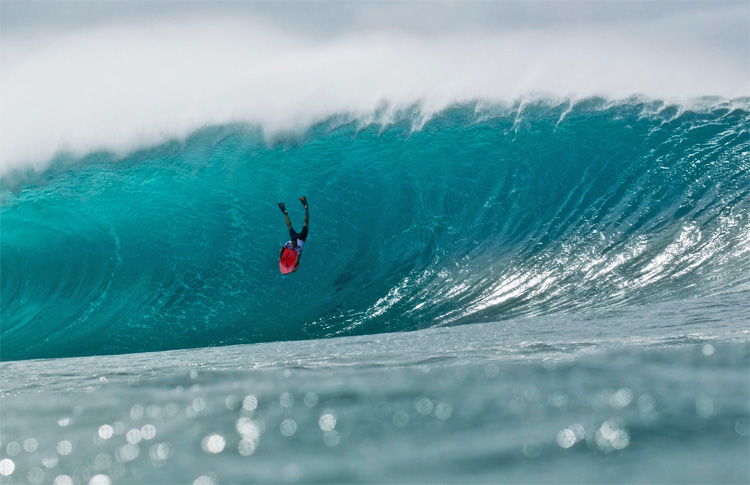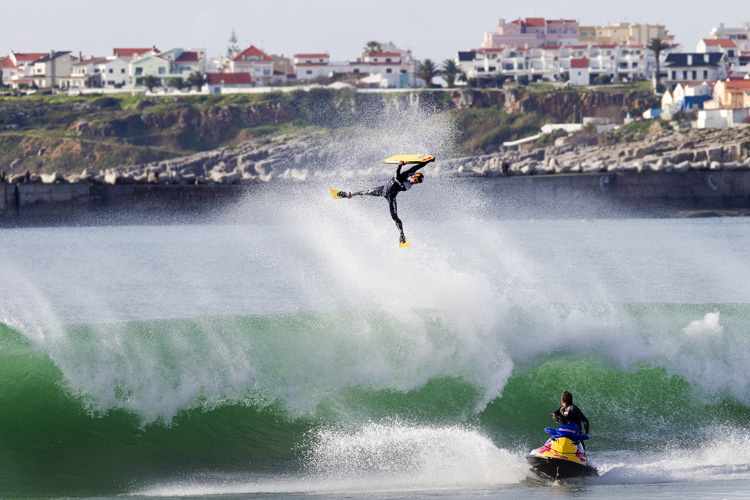Bodyboarders are passionate about their sport. Today, prone riding is an established art form. Discover the best arguments a bodyboarder could present to defend his taste for boogie boarding.
For many, bodyboarding is the ultimate wave-riding sport. Boogie boarding fanatics might say that their sport preceded surfing as an ancient outdoor activity.
And for a few, bodyboarding is just an easier way to get into the waves.
Some riders will ride a bodyboard or a surfboard, depending on the ocean's mood. A significant minority of hardcore riders will never trade a bodyboard for a surfboard.
However, the eternal debate continues.
Is surfing better than bodyboarding? Why should you ride prone when you can stand up? Is there a natural way to enjoy the energy of a wave?
Thirty years ago, bodyboarders were not welcome in many of the world's best surf spots. They didn't get the respect they deserved from their fellow wave riders.
Bodyboards were made in a factory; surfboards were hand-shaped by artisans.

A Sport In Its Own Right
But, as time passed, bodyboarding slowly changed how others saw the sport. People started appreciating the new radical moves introduced by boogie boarders.
Prone wave riders added risky and wild variables to the way a wave can be ridden.
And when bodyboarders reached the skies - literally - and included acrobatic, gravity-defying maneuvers into the sport's repertoire, surfers nodded in acceptance.
Shall we repeat it? Bodyboarding is not an introduction to surfing.
Today, bodyboarding is a highly technical water sport. It is not summer entertainment. Forget that stereotype - you can't say you know how to bodyboard just because you surf.
Competitive bodyboarding has evolved to the point that it can't be compared to surfing anymore.
The old physical rivalry between surfers and bodyboarders - and vice versa - no longer makes sense, but you can rationally discuss a few topics that make spongers proud of their choice.
You will never hear a diehard bodyboarder say he started riding prone because it was easier. It was a preference. Period.
So, if you feel you belong to their devoted club, make sure you use the right arguments when the bodyboarding versus surfing discussion takes place.
Later, Steeper and Deeper
Let us be clear and rational. Laying on your stomach while descending a giant wall of water is a noble art.
"Stand up" for bodyboarding. Here's why:
1. Bodyboarding is the Closest Thing to Bodysurfing
Whenever you're riding a boogie board, your heart is closer to the water, and your eyes are nearly touching the ocean's surface.
It's an indescribable feeling, especially if you're gliding down a steep wave at full speed.
2. Waves Always Look Bigger on a Bodyboard
When you're lying down, waves are almost always breaking overhead-high.
Riding a wave on your belly puts everything around you in perspective and adds drama to the whole experience.
3. Bodyboards Fit in the Car's Trunk
Forget complex surf car racks and transporting long boards inside the vehicle.
Bodyboards are a smart and portable wave-riding vehicle that occupies less space than a disassembled table.
4. The Speed Sensation is Better and More Intense
The apparent sense of speed you get from riding a bodyboard is always more intense than on a surfboard.
Your eyes are often one foot above the surface of the water, and swim fins provide an extra boost, increasing not only the apparent but also the real speed.
5. Only Bodyboarders Can Drop Into Vertical Wave Faces
It's an undeniable fact that bodyboards grant access to waves that stand-up surfers can't technically ride.
Bodyboarders can drop into waves later, steeper and deeper than their fellow surfers.
6. Paipo Boards Are Older Than Surfboards
Bodyboards are the natural evolution of paipo boards, the wooden planks that date back as far as 2,000 BC.
Humans have been riding them in ocean waves for a long time, and way before the early modern longboards were introduced.
7. Bodyboards Are More Resistant Than Surfboards
It's in the core. Boogie boards are stiff and flexible at the same time.
You'll rarely need to do ding repairs on a bodyboard.
8. Bodyboarders Get Bigger Airs
Bodyboarders take advantage of fast, powerful, and hollow waves and use swim fin and leg power to boost themselves into the sky.
They can throw themselves high in the sky like they've been fired by a cannon.
9. Only Bodyboarders Can Surf Closeout Waves
Bodyboarders get into waves faster than surfers, so they're able to ride in the early phase of a closeout wave.
In bodyboarding, a closeout wave doesn't necessarily mean getting pounded or wiping out.
10. Bodyboards Are Cheaper Than Surfboards
Generally speaking, bodyboards are way less expensive than surfboards.
You can buy a professional boogie board for half the price of a good surfboard.
